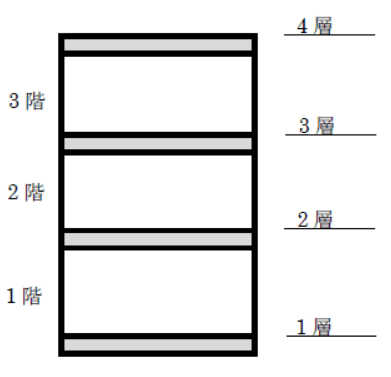掲示板 Forums - 一層 vs 一階 when talking about buildings
Top > 日本語を勉強しましょう / Let's study Japanese! > Anything About Japanese Getting the posts
Top > 日本語を勉強しましょう / Let's study Japanese! > Anything About Japanese
My general understanding is that 一階 is used commonly for building stories (1st floor, 2nd floor) and 一層 can be used more broadly and abstractly.
But when it comes to talking about buildings, what's the difference in nuance when you use 一階 vs 一層? In the Renshuu dictionary, it says 一層 is lowest floor of a building and 一階 means first floor, ground floor. Can I use interchangeably, or will it change the meaning somewhat? For example, I was reading a visual novel and it used 一層 to talk about the ground floor so I was wondering if this was deliberate, since I've mostly only heard 一階
一層 is mostly used figuratively. It doesn’t seem to be used for stories very often, or maybe not at all. 単層 seems like the appropriate word to use for a single-storey building, but it is also marked rare.
I would stick to 階 except for 上層 and 下層.
There is also グラウンドレベル, but that seems to be used only in gaming. Your VN may have intended that as a double meaning.
Ah, thank you so much!
I'm not exactly sure I understand 100%, so I'd really appreciate your help --
I was googling how 層 is ever used related to buildings (you're right, it's super rare), and I found this person (https://detail.chiebukuro.yaho...) asking about Kinkaku-ji (https://en.wikipedia.org/wiki/...), and they use 層... is this because it's not a building we use normally (live in/work in it), but describing more as an aesthetic "object" of sorts? In the english Wikipedia article for Kinkaku-ji they use "stories/floors" to talk about the architectural design, and in Japanese they use 層 and 階 ("金閣は木造3階建ての楼閣建築で" .... "初層と二層の平面は同形同大で")
I'm wondering if you ever use 層 for building structures, is it in the sense you use it to describe a design rather than what you "use" for everyday life?
This is getting to be above my pay grade, but special architecturally significant structures often have specialized terminology that are not used for normal buildings. Apparently, temples, shrines, pagodas, stupas, and pyramids all use 層
Ahh okay that bit about the "architecturally significant structures" is very helpful to keep in mind, because the VN was talking about a building that was seen as an oddity/mysterious structure that they were investigating, so maybe that's why they used 層. Thank you so much!!
階 is used for physical floors in a building, while 層 is used for abstract or conceptual layers/levels.
階
1. Refers to "floor" as a physical space, between two floor slabs.
2. Focuses on the interior space people use.
3. Used in everyday life to say where something is in a building.
層
1. Refers to a "layer" as a structural or conceptual unit.
2. In a building, it might mean the entire horizontal segment including the ceiling above it.
3. Often used when the building or structure has a functional or formal layout, e.g. research facilities, bunkers, towers.
層 = one full slice of the structure (floor + ceiling)
階 = the space between two layers (where people live/work)
And then 層 apparently can be used for layers of things like ケーキの層 or 地層
Source https://hinative.com/questions...
建築物の層とは、床の総称です。また、床と床の間の空間を「階」といいます。 From http://kentiku-kouzou.jp/struc...
So, 階 is the space between two 層 (architecture, construction, and engineering sense). If I'm understanding these sources correctly.

I think it makes sense for what you're describing. You can see it used in anime (Sword Art Online, Made in Abyss) for more abstract "floors". In gaming it can mean a stage/segment in a "layered" challenge, FF14 Raids for example.
The reference to Made in Abyss has made it click into place in my mind - I doubt I'll forget it now! Thank you.
階 is used for physical floors in a building, while 層 is used for abstract or conceptual layers/levels.
階
1. Refers to "floor" as a physical space, between two floor slabs.
2. Focuses on the interior space people use.
3. Used in everyday life to say where something is in a building.
層
1. Refers to a "layer" as a structural or conceptual unit.
2. In a building, it might mean the entire horizontal segment including the ceiling above it.
3. Often used when the building or structure has a functional or formal layout, e.g. research facilities, bunkers, towers.
Wow I truly appreciate your taking the time and energy to write this -- this is so helpful in getting a better idea of the distinction. And that diagram is awesome. Thanks again!!